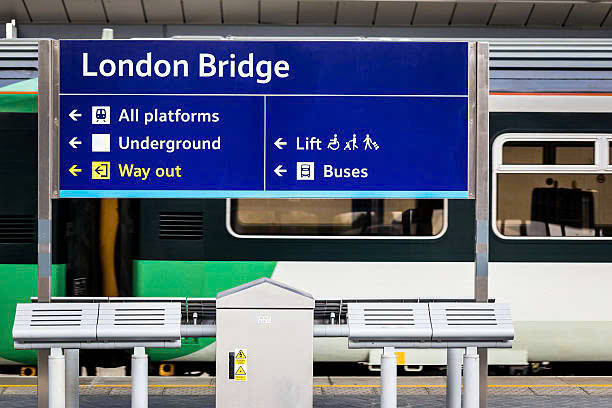A sign on the Ben Thanh - Suoi Tien metro line in Ho Chi Minh City, reading "For Ben Thanh," has sparked controversy over whether "to" or "for" is the correct preposition to use in this context.

A directional sign on the Ben Thanh - Suoi Tien metro line in Ho Chi Minh City. (Photo: Nguyen Hue)
On December 22, the long-awaited Metro Line 1 (Ben Thanh - Suoi Tien) officially began operations. Shortly afterward, discussions erupted over the appropriateness of the sign stating "For Ben Thanh." Critics argued that "to Ben Thanh" would be more accurate for indicating a destination.
Teacher Tran Anh Khoa, a Ho Chi Minh City-based educator with a perfect IELTS score of 9.0, explained that both "to" and "for" are grammatically correct, depending on the context and intended meaning. However, he noted that "to" is more commonly used in such scenarios.
"The contention arises from the absence of a preceding verb or adjective to clarify the preposition’s purpose. If the implied verb is 'go,' then 'go to Ben Thanh' would make sense. Alternatively, if the implied verb is 'head,' 'bound,' or 'leave,' then phrases like 'head for,' 'bound for,' or 'leave for' are appropriate," Khoa elaborated.
He added that the phrase "be + for" can indicate purpose, making "for Ben Thanh" interpretable as heading toward the final destination, Ben Thanh station. "This reasoning is also logical," he said.
Similarly, Phung Tien Thanh, another IELTS 9.0 scorer, argued that "for" and "to" are both valid choices in this context. "For Ben Thanh" can be understood as "in order to reach trains headed in the direction of Ben Thanh." This aligns with signs guiding passengers to platforms serving Ben Thanh-bound trains. Another interpretation, Thanh suggested, could be "if you wish to reach Ben Thanh."
 |
 |
Dr. Nguyen Viet Khoa, acting head of the Foreign Language Faculty at Hanoi University of Science and Technology, criticized the use of "for Ben Thanh" as inappropriate in terms of both grammar and usage for traffic signage.
He argued that while "for" might work in other contexts - such as "This train is for Brighton only" or "This train was carrying steel for Ben Thanh" - it is unsuitable for directional signs. Dr. Khoa noted that "to Ben Thanh" is grammatically correct but less commonly used in traffic signage. Instead, locations are often paired with arrows, especially in English-speaking countries like the U.S. and the U.K., to simplify navigation.
Tran Thuy Linh, a lecturer with a master’s degree in teaching English from Victoria University in Australia, observed that metro signs aim for clarity in conveying routes or destinations.
According to Linh, "to Ben Thanh" emphasizes a route or endpoint, making it apt for phrases like "This train goes to Ben Thanh." Meanwhile, "for Ben Thanh" highlights purpose or service, as in "This train is for Ben Thanh," indicating the train serves or is intended for Ben Thanh station.
Ultimately, the choice between "for" and "to" depends on the intended focus of the message. While both options are technically correct, the context of metro signage leans toward simplicity and clarity, leaving room for both interpretations.
Thuy Nga